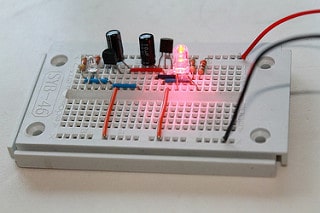AMAZON multi-meters discounts AMAZON oscilloscope discounts
CONTENTS
2. The Bi-Stable Multivibrator

Introduction
Originally "multivibrator" meant only a free-running, square wave oscillator normally utilized to produce either harmonics or sub-harmonics for test purposes. Current applications of multivibrator circuits are so extensive that a listing of just a few of the specialized devices utilizing this type of oscillator indicates the importance of the subject. Cathode ray oscilloscopes, television receivers, tv cameras, tv transmitters, computers, radar, electronic switches, multiplex telegraph transmitters-these are but a few of the specialized devices that require these particular types of relaxation oscillators.
The necessity of a careful study of this topic cannot be stressed too highly. The guide has been organized to help the student crystallize the important ideas pertaining to multivibrators and their circuit applications. Although the treatment is non-mathematical, the analyses are sufficiently extensive to permit the technician, practicing engineer, or advanced student to develop these fundamental concepts and basic applications to best advantage. No attempt is made to treat or list all possible applications since this is an obvious impossibility in a work of this size. The illustrative circuits chosen, however, are sufficiently representative of major design considerations.
Particular attention is given to the basic principles of the multivibrator and the major types, namely: the bi-stable multi-vibrator, mono-stable multivibrator, and a-stable multivibrator.
Less definitive terms (sometimes more popular in terminology) are explained to help the reader recognize them. A sample design problem is also presented in sufficient detail to permit an under standing of the procedures followed in a design analysis.
Grateful acknowledgement is made to the staff of the New York Technical Institute for its assistance in the preparation of the manuscript for this guide.
New York, N. Y., February 1956; A.S.
Also see: Electrostatics (1958)